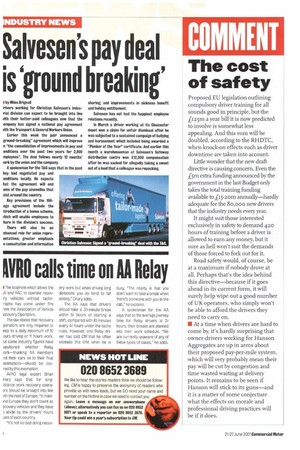COMMENT
Page 6

If you've noticed an error in this article please click here to report it so we can fix it.
The cost of safety
Proposed FU legislation outlining compulsory driver training for all sounds good in principle, but the /1.2.5m a year bill it is now predicted to involve is somewhat less appealing. And this sum will be doubled, according to the RHDTC, when knock-on effects such as driver downtime are taken into account.
Little wonder that the new draft directive is causing concern. Even the Ism extra funding announced by the government in the last Budget only takes the total training funding available to £15-2om annually—hardly adequate for the 8o,000 new drivers that the industry needs every year.
It might suit those interested exclusively in safety to demand 420 hours of training before a driver is allowed to earn any money, but it sure as hell won't suit the demands of those forced to fork out for it.
Road safety would, of course, be at a maximum if nobody drove at all. Perhaps that's the idea behind this directive—because if it goes ahead in its current form, it will surely help wipe out a good number of UK operators, who simply won't be able to afford the drivers they need to carry on.
• At a time when drivers are hard to come by, it's hardly surprising that owner-drivers working for Hanson Aggregates are up in arms about their proposed pay-per-mile system, which will very probably mean their pay will be cut by congestion and time wasted waiting at delivery points. It remains to be seen if Hanson will stick to its guns—and it is a matter of some conjecture what the effects on morale and professional driving practices will be if it does.
































































































